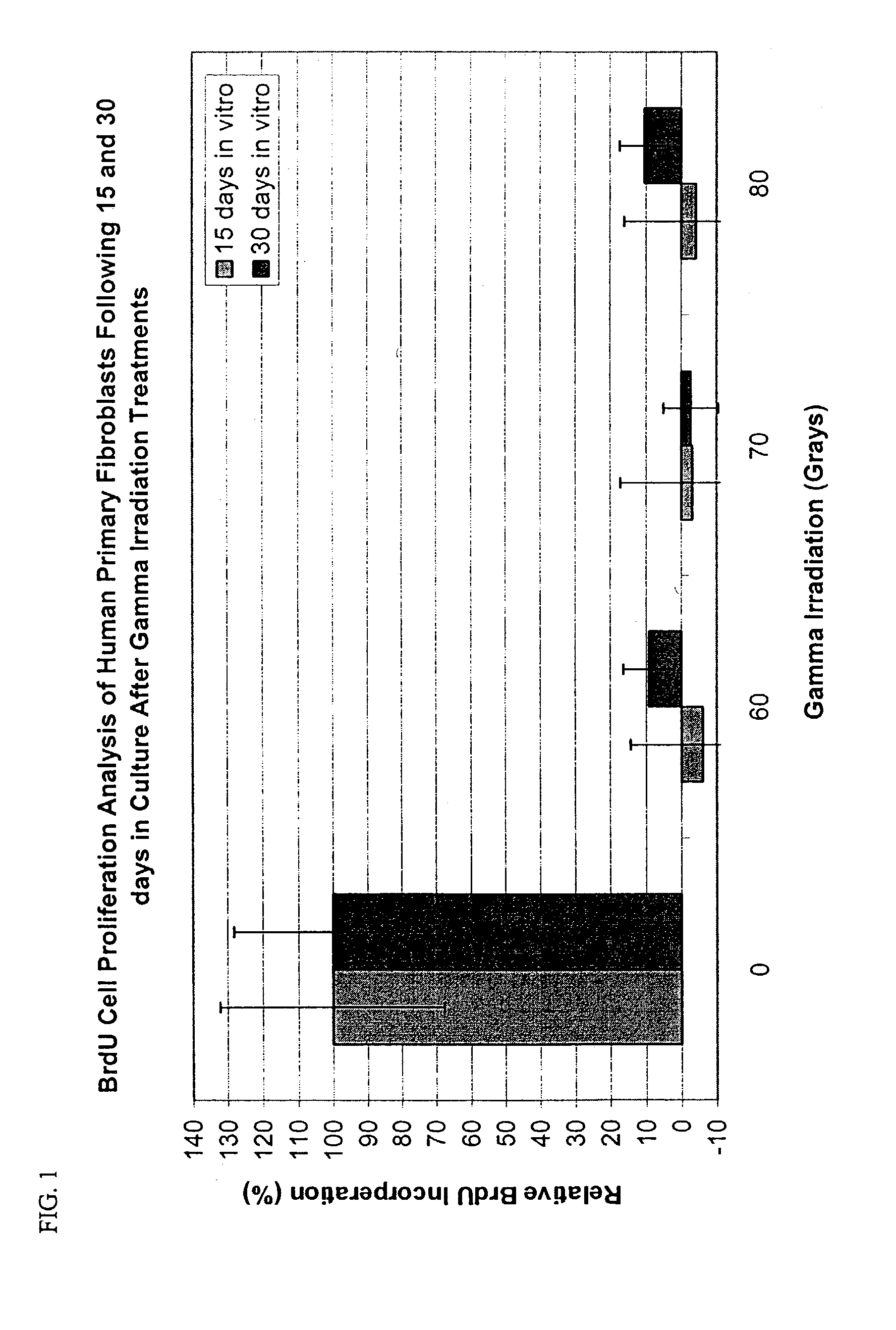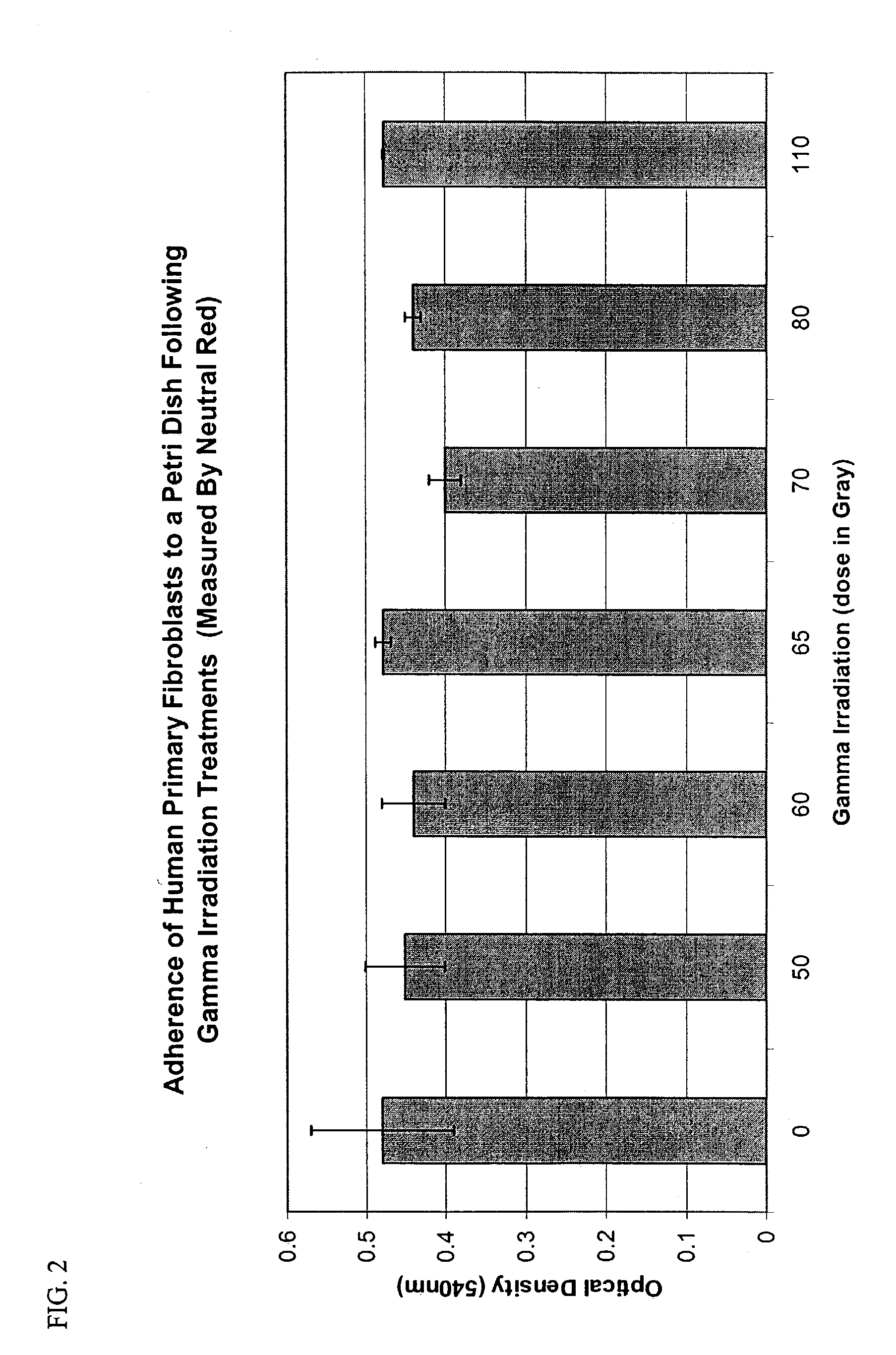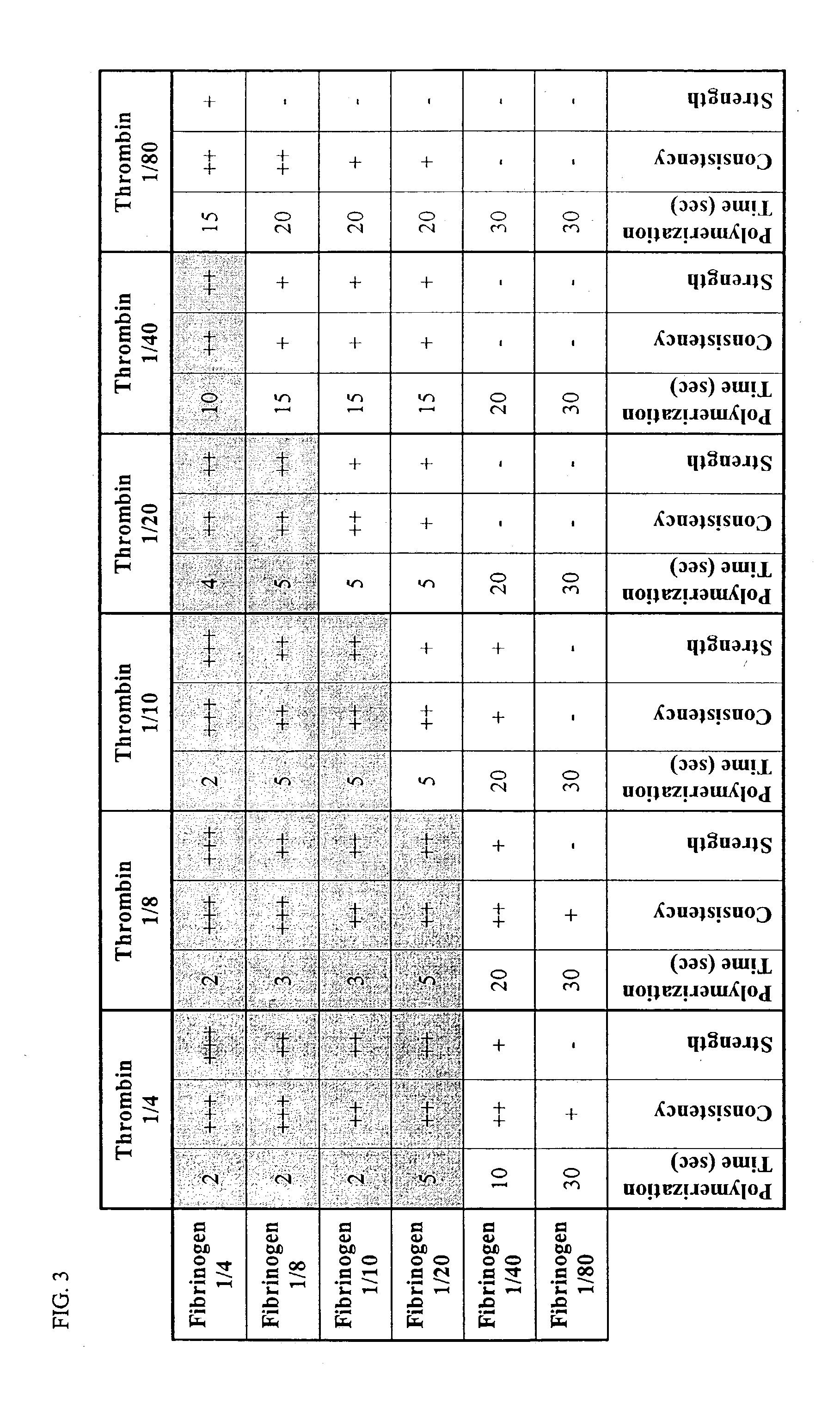Methods and compositions for tissue regeneration
a tissue regeneration and composition technology, applied in the field of tissue regeneration, can solve the problems of poorly studied function/biological properties of differentiated fibroblasts, and achieve the effect of restoring organ integrity and inhibiting excessive scar formation
- Summary
- Abstract
- Description
- Claims
- Application Information
AI Technical Summary
Benefits of technology
Problems solved by technology
Method used
Image
Examples
example 1
Isolation of Keratinocytes and Fibroblasts
[0139]Keratinocytes and fibroblasts may be isolated after splitting the epidermis from the dermis using an enzyme such as dispase or thermolysin. The isolated epidermis can be incubated with trypsin to obtain a single cell suspension of keratinocytes, which can then be plated onto culture dishes and amplified to create a bank of primary keratinocytes. The isolated dermis can be incubated with a dissociation enzyme such as collagenase to obtain fibroblast single cell suspensions ready to be plated and amplified or minced and dispatched onto a culture plate, and cultured until fibroblasts have migrated from the tissue. These cells can then be collected after trypsin treatment and further amplified to establish a fibroblast cell bank. Primary human keratinocytes and fibroblasts isolated in this manner can be used for the preparation of cell and fibrin admixtures.
[0140]The isolation of fibroblasts may also be carried out as follows: fresh tissue...
example 2
Composition of the Components of the Cell Preparation of the Invention
[0141]Component #1
[0142]This component can be made by performing a four-fold dilution of the Sealer Protein Solution in the Tisseel VH Fibrin Sealant (Baxter). After dilution, the concentration of the components in the Sealer Protein Solution was as follows:
[0143]
Fibrinogen:18.75 mg / ml–28.75 mg / mlFibrinolysis Inhibitor (Aprotinin):750 KIU / mlPolysorbate: 0.05 mg / ml–0.1 mg / mlSodium Chloride: 0.5 mg / ml–1.0 mg / mlTrisodium Citrate: 1.0 mg / ml–2.0 mg / mlGlycine: 3.75 mg / ml–8.75 mg / ml
[0144]The Sealer Protein Solution was diluted in Hank's Buffered Saline Solution (HBSS) without Ca2+ or Mg2+. The presence of these two ions induced the formation of precipitates during the freezing and thawing process.
[0145]Those skilled in the art will recognize that the Tisseel Sealant can be supplemented with other commercially available fibrinogen and aprotinin preparations to achieve similar results. Moreover, fibrinogen may also be dilu...
example 3
Testing the Effective Dose of Mitomycin C
[0153]Previous work has shown the efficient concentrations of mitomycin C (MMC) for growth-arrest of mouse 3T3 fibroblasts to be 2 μg / ml (Rheinwald and Green, Cell 6:331–43 (1975)) and for growth arrest of human dermal fibroblasts to be 8 μg / ml (Limat et al., J. Invest. Dermatol. 92:758–62 (1989)).
[0154]The rat fibroblast cell line (CRL 1213), the FGF1-transfected rat fibroblast cell line (1175 / CRL 1213), the human telomerase immortalized fibroblast line (MDX12), and the primary human fibroblasts (EDX1) were each growth arrested using the following method. Fibroblasts were grown in DMEM+10% FCS, 25 mM Hepes, 1 mM pyruvate, 2 mM L-Gln, 100 U / ml penicillin, 100 μg / ml streptomycin in T75 flasks. At confluency, the cells were detached and plated at a density of 105 cells / cm2, further incubated for 48 h, then treated with mitomycin C (MMC) at 0, 2, 4, 8, 12 μg / ml for 5 h. The cells were then rinsed with PBS and detached with 0.05% trypsin / 0.02% ED...
PUM
| Property | Measurement | Unit |
|---|---|---|
| temperatures | aaaaa | aaaaa |
| volume | aaaaa | aaaaa |
| volume | aaaaa | aaaaa |
Abstract
Description
Claims
Application Information
 Login to View More
Login to View More - R&D
- Intellectual Property
- Life Sciences
- Materials
- Tech Scout
- Unparalleled Data Quality
- Higher Quality Content
- 60% Fewer Hallucinations
Browse by: Latest US Patents, China's latest patents, Technical Efficacy Thesaurus, Application Domain, Technology Topic, Popular Technical Reports.
© 2025 PatSnap. All rights reserved.Legal|Privacy policy|Modern Slavery Act Transparency Statement|Sitemap|About US| Contact US: help@patsnap.com



